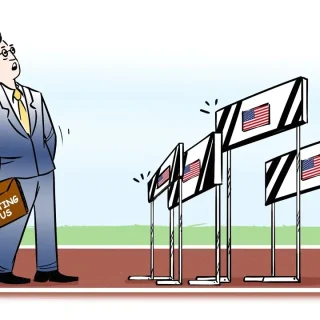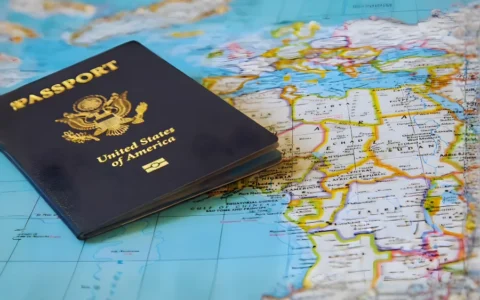The American passport, once a global symbol of travel freedom, has fallen to its lowest position in decades. Once ranked among the most powerful in the world, it has now dropped to 12th place. Just a few years ago, the U.S. passport allowed nearly unrestricted access to most parts of the globe, offering visa-free entry to over 180 destinations. Today, that advantage is shrinking as other countries widen their reach and America’s mobility weakens.
Losing Key Travel Access in Brazil and China
Two major diplomatic shifts have contributed to this decline. Earlier this year, Brazil reinstated visa requirements for U.S. travelers, reversing years of visa-free travel. The move came after the United States failed to offer reciprocal access to Brazilian citizens. Around the same time, China expanded its list of countries receiving visa-free entry but notably excluded the United States. These changes, though seemingly limited to a handful of destinations, have had an outsized impact on America’s global mobility score.
Adding to the challenge, several other nations such as Papua New Guinea, Myanmar, Somalia, and Vietnam have adjusted or tightened their entry policies for American travelers. Collectively, these developments have chipped away at the long-held dominance of the U.S. passport.
The U.K. Faces a Similar Decline
The United Kingdom, once near the top of global passport rankings, has also seen its travel privileges weaken. Once ranked 6th, the British passport has now slipped to 8th place. As with the United States, the drop reflects broader geopolitical shifts, visa reciprocity issues, and evolving immigration policies around the world. The U.K.’s post-Brexit travel landscape, coupled with changing relationships with EU and Asian nations, has made it harder for British travelers to move as freely as before.
A Decline in Openness Reflects Policy Shifts
The weakening rank of the U.S. passport is closely linked to a growing lack of openness in American visa policy. Although U.S. citizens can travel to around 180 destinations without a visa, the United States itself allows only a small number of nationalities to enter visa-free. This imbalance has placed the country far lower on the global openness scale compared to other developed nations. In recent years, stricter entry rules, extended processing times, and broader travel restrictions have made it harder for many international visitors to access the U.S. The shift reflects a more guarded approach to diplomacy and mobility, reducing the sense of reciprocity that once strengthened the nation’s global travel influence.
Adding to this decline are the new and increased visa-related fees introduced for foreign travelers. The Electronic System for Travel Authorization (ESTA) fee—applicable to visitors from countries in the Visa Waiver Program—was recently raised from USD 21 to USD 40. On top of that, a new USD 250 “visa integrity fee” is being planned for most non-immigrant visa categories. These higher costs, combined with additional procedural requirements, have further strained accessibility for foreign nationals. Together, they highlight a more restrictive and costly entry framework that not only limits inbound travel but also contributes to the overall fall of the U.S. passport in global rankings.
Changing Patterns of Global Mobility
The decline of Western passports underscores a larger trend: global mobility is no longer dominated by North America or Europe. Asian nations such as Singapore, Japan, and South Korea have surged to the top of global rankings, reflecting their expanding diplomatic ties and mutual visa-waiver agreements.
Meanwhile, the United States has become more restrictive. Currently, only 46 nationalities can enter the U.S. without a visa—far fewer than the access American travelers once enjoyed abroad. This imbalance, combined with slower visa-policy updates, has caused the U.S. to lose its long-standing edge in travel freedom.










